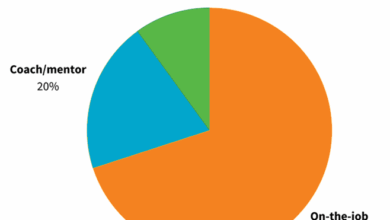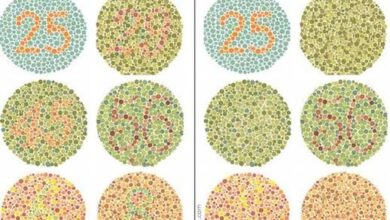Can your learning strategy keep pace with digital disruption?
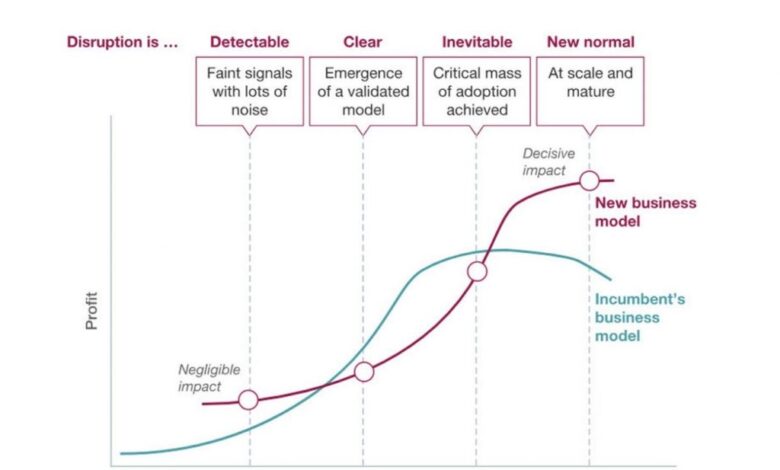
Strategise, strategise, strategise
A modern learning strategy needs to:
- Start with business performance
- Plan for disruption
- Make learning continuous, personalised, at the point of need and in the workflow
- Build essential skills
- Mine data
Here’s how it can do so.
Business performance and planning for disruption
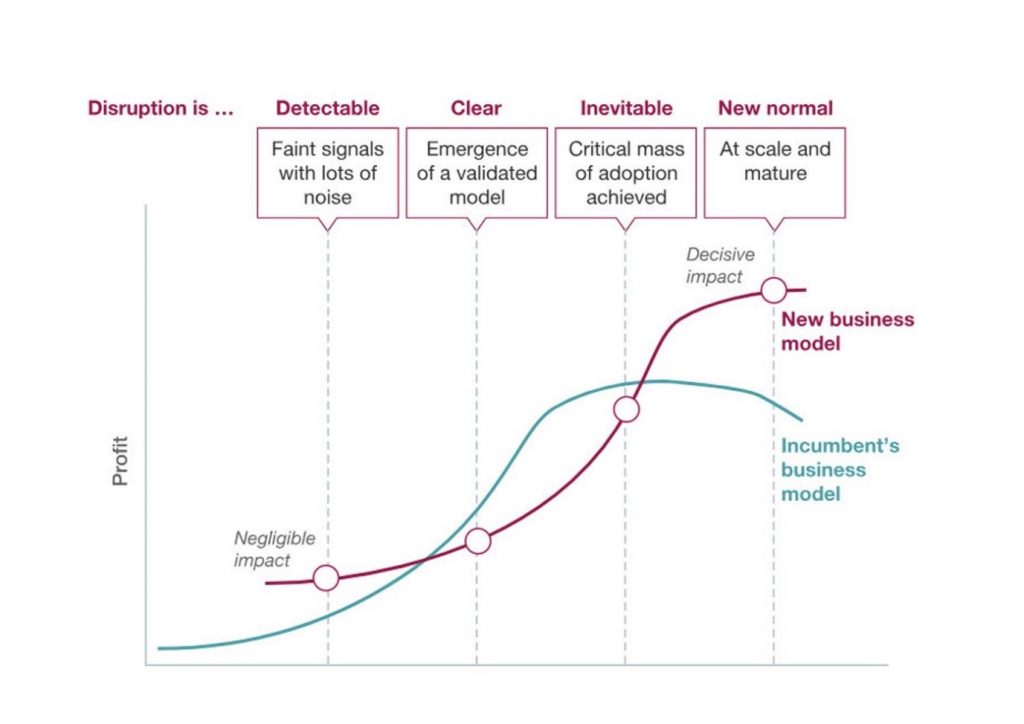

Every business is on a disruption curve, indicating how it is responding to disruption at certain stages of its development. It’s important to know whether your business is an incumbent or a disruptor and where they are on this S curve, because different parts of the curve present different challenges.
Knowing where you lie on the curve allows you to wrap your learning strategy around these challenges, and also to predict what your pain points will be in the next few years and what kind of resistance or barriers you can expect internally.
The above model is from McKinsey, and I recommend you try and situate your own business on it. Are you in a myopic phase, for example, where things are going swimmingly, and the business is avoiding pain to the extent that inertia creeps in? Or are you instead a disruptor, where the opposite is likely to be taking place?
Try taking this model to your stakeholders, asking them to plot where they think the business and its competitors are and then start the conversation about what the actual needs of the business will be in the next 6, 12, 18 and 24 months.
For even more insight, try supplementing this with a survey of a representative group of learners in the part of the business you’re trying to reach. This helps situate the business, transfers accountability for people issues to it and allows learners to determine what they need to fulfil the business vision.
Continuous learning
Following on from those discussions with learners, your strategy needs to consider how to make learning continuous. I see organisations with great induction plans and executive or high potential learning, but somehow everyone in the middle is ignored so that the greatest mass gets the least attention.
This is the type of deficiency your strategy needs to address, for instance by targeting that middle ground, or by creating smaller, more personalised programs. These can be more adaptable and effective in times of rapid change, such as the quick adoption of new systems and processes.
You can also include new digital learning technology that keeps up with change and delivers learning at the point of need. Some of the latest performance support tools we have developed, such as Saffron eaSe, sit in the background but can recognise exactly where the user is in any system or desktop app to provide context-sensitive help. These tools can help extend the learning process and take some of the burden off pre-emptive training.
Point-of-need learning can bring the kind of technology consumers are used to adopting into your learning strategy – on-demand, personalised, in the background. They help clear head space for learners to be more productive and creative, and nurture critical analysis rather than learning by rote. All the more important given the dropping half-life of skills.
The new wave of digital learning also helps generate and track data, the great resource of the digital age and one that you should be using.
Data is your biggest differentiator
I constantly hear from L&D “We don’t have data” or “we’re not allowed to use it”, or “GDPR is getting in the way”. The much more likely reason is that people just don’t know how to use it. Indeed, as little as 18% of learning professionals have skills in data analytics.
We’re currently working with a data science company, and have managed to source data from their LMS, from appraisal systems, from assessments, from business KPIs, from HR databases… the list goes on.
This data gives the client insight into not only the current capabilities of learners, but also what kind of people will be successful now and their attributes; what will take them into the future and who will be the next generation of leaders.
You need to find the data in your business, because it allows you to make the business sit up and put the HR agenda back into the Boardroom.
A framework for learning
So how can you draw all these strategic considerations together into one structural framework that accompanies the learner throughout their whole learning journey? One approach is to use the following framework based upon Mosher and Gottfredson’s Five Moments of Need:
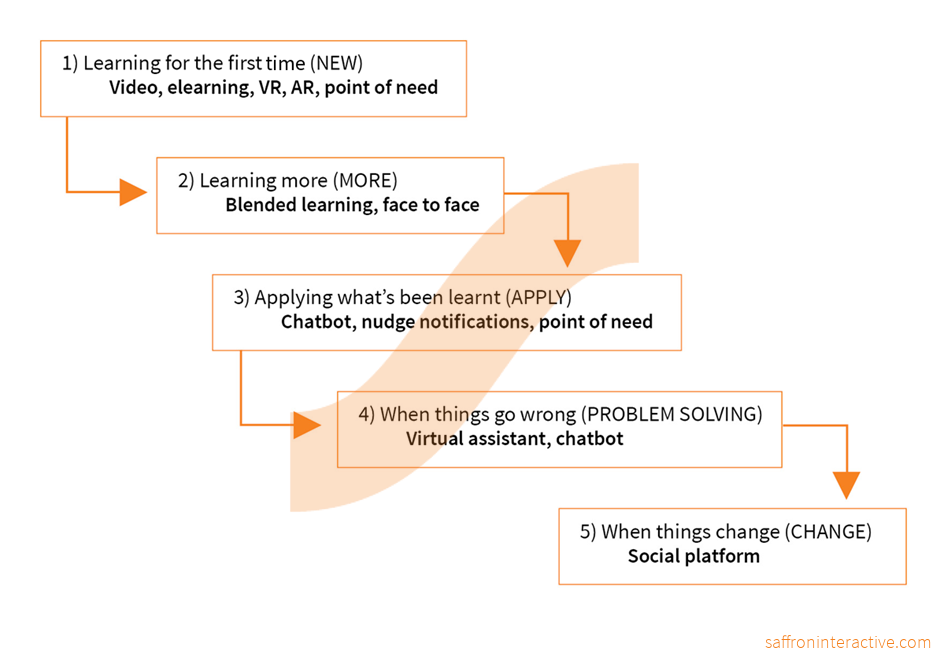
If you can use the disruptor curve context, business performance focus, continuous learning prioritisation and data discernments together with learning moments of need, then your learning strategy will get ahead of the pack.
While it might seem like a race, it’s an iterative cycle of continuous improvement. So get ready for the marathon but start now – or get left behind!
We’ve got something to help with that…
